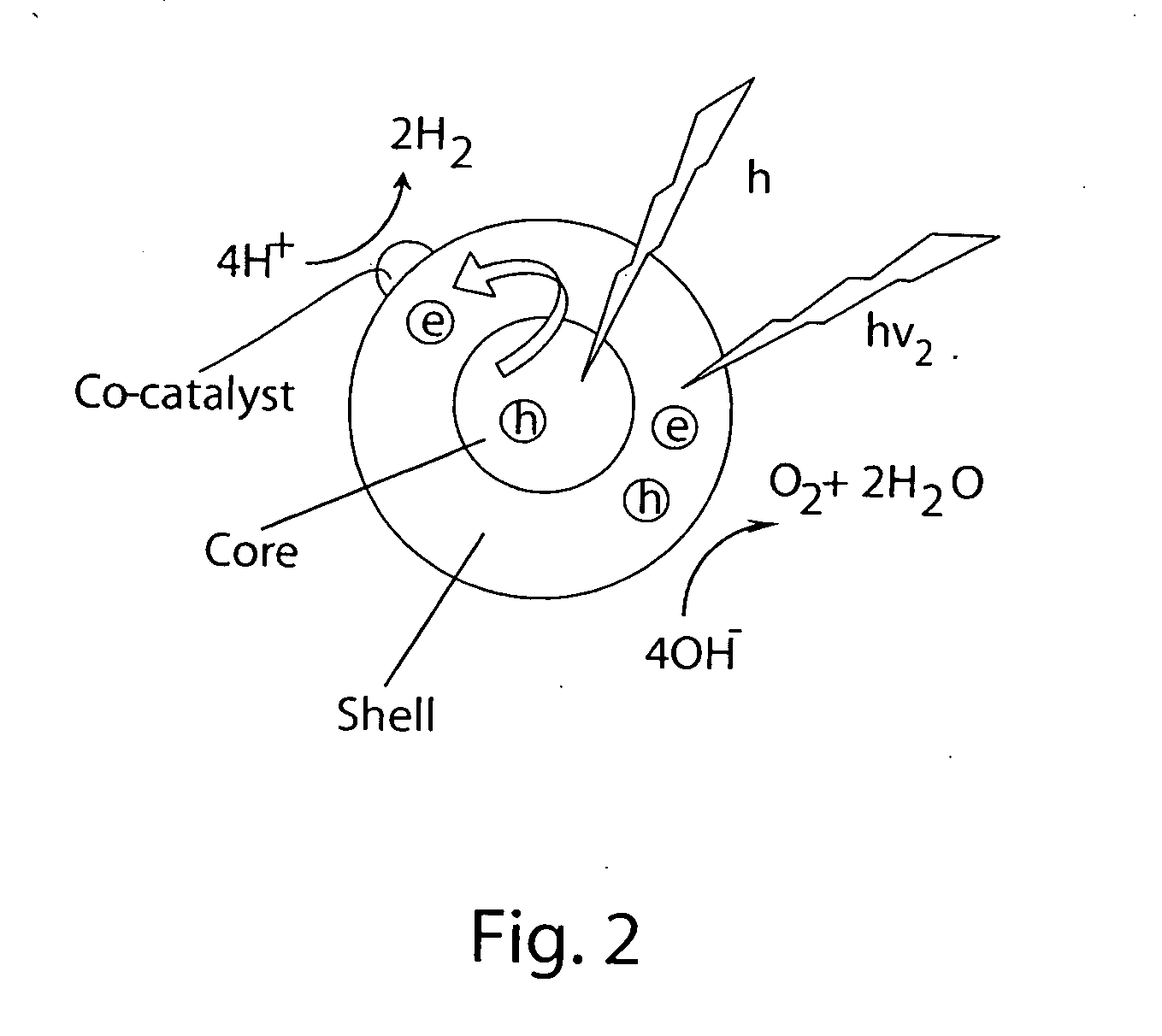Efficient hydrogen production by photocatalytic water splitting using surface plasmons in hybrid nanoparticles
a surface plasmon and hydrogen production technology, applied in the direction of metal/metal-oxide/metal-hydroxide catalysts, physical/chemical process catalysts, energy input, etc., can solve the problems of limiting the usefulness of many photoactive materials, no photoactive materials have yet been found to meet all these requirements, and semiconductor materials, however, do not meet these requirements
- Summary
- Abstract
- Description
- Claims
- Application Information
AI Technical Summary
Problems solved by technology
Method used
Image
Examples
Embodiment Construction
[0029]One embodiment of the present invention involves full solar spectrum irradiation of the noble metal core / semiconductor shell hybrid nanoparticles to generate electron-hole pairs both in the core and the shell of composite (hybrid) nanoparticles. This embodiment of the invention is based on systems using the energy of the entire solar spectrum for overall unassisted photocatalytic splitting of water using noble metal core unique plasmonic properties that provide photoinduced electron transfer from the noble metal core to a semiconductor shell or layer thereon. The method is provided for overall photocatalytic splitting of water using metal core / semiconductor shell composite nanoparticles where a noble metal (e.g. Au, Ag, Pt, Pd or noble metal alloy) core is coated with a wide-bandgap semiconductor photocatalyst (e.g. TiO2, ZnS, Nb2O5) shell or layer transparent to optical excitation in the visible and near-infrared spectral ranges, consistent with plasmon absorption bands of th...
PUM
| Property | Measurement | Unit |
|---|---|---|
| Nanoscale particle size | aaaaa | aaaaa |
| Nanoscale particle size | aaaaa | aaaaa |
| Dispersion potential | aaaaa | aaaaa |
Abstract
Description
Claims
Application Information
 Login to View More
Login to View More - R&D
- Intellectual Property
- Life Sciences
- Materials
- Tech Scout
- Unparalleled Data Quality
- Higher Quality Content
- 60% Fewer Hallucinations
Browse by: Latest US Patents, China's latest patents, Technical Efficacy Thesaurus, Application Domain, Technology Topic, Popular Technical Reports.
© 2025 PatSnap. All rights reserved.Legal|Privacy policy|Modern Slavery Act Transparency Statement|Sitemap|About US| Contact US: help@patsnap.com



